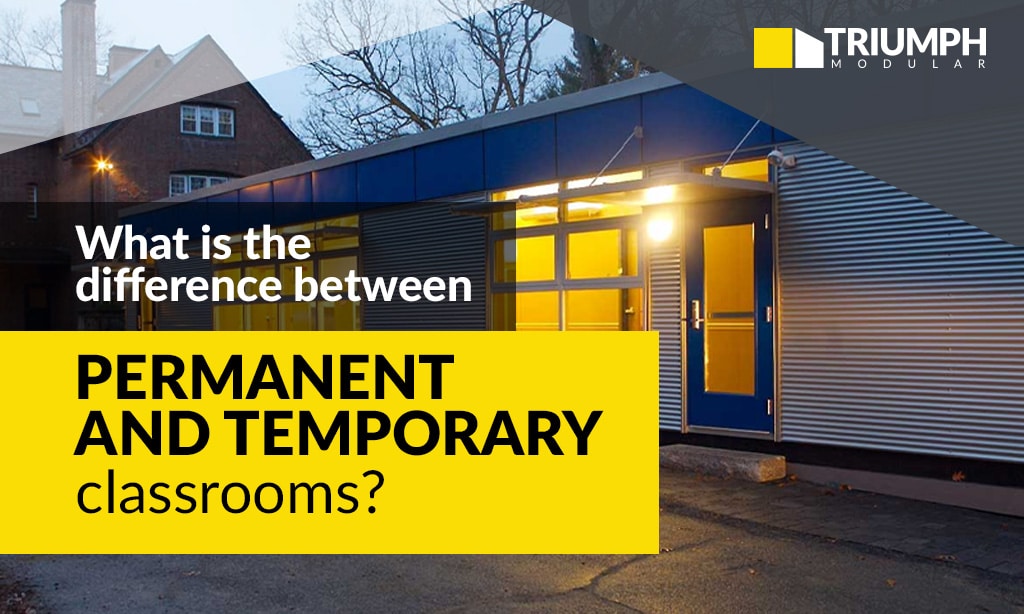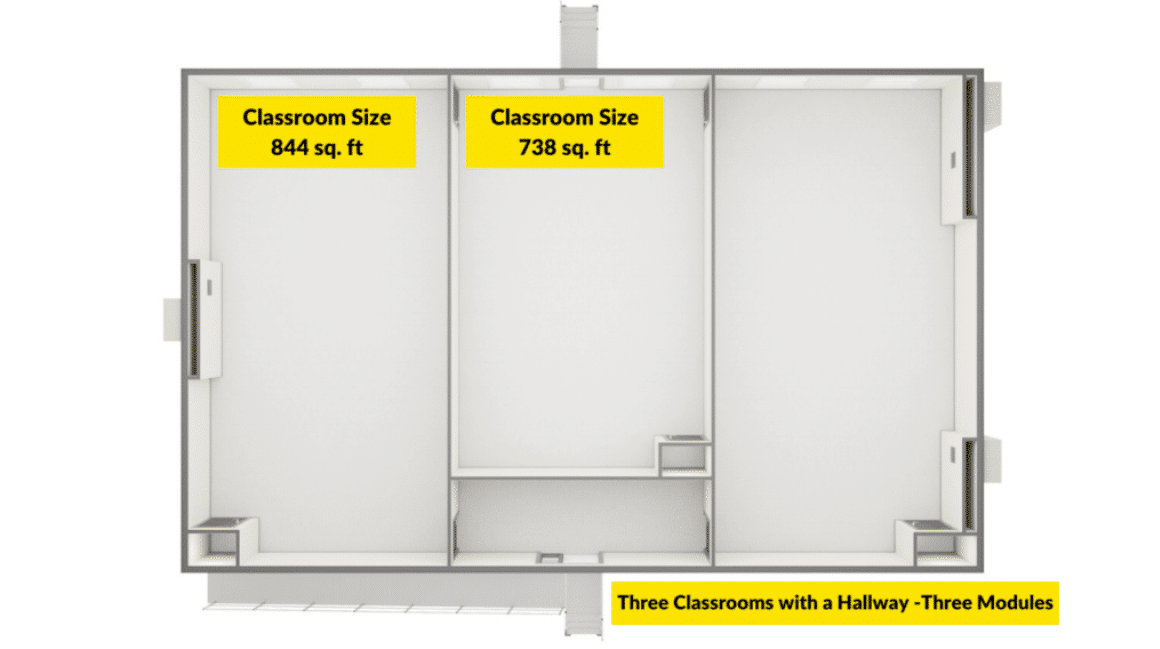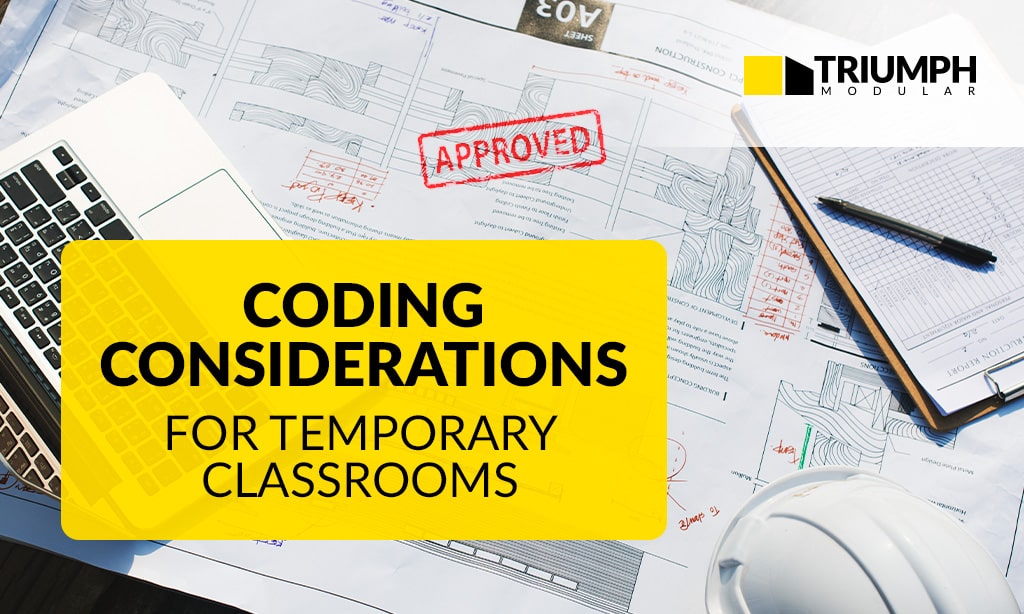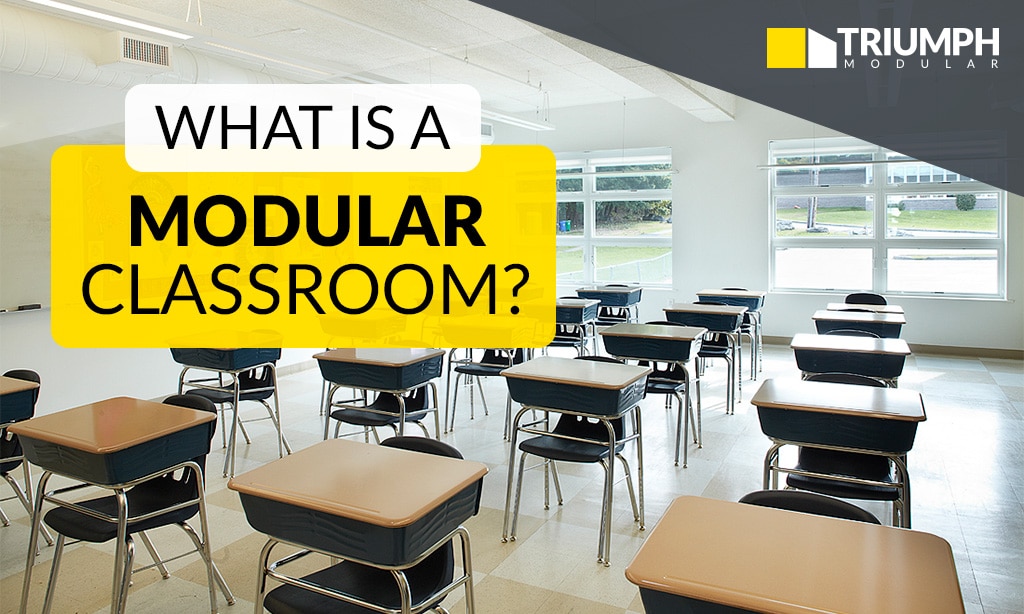When you decide to use modular classrooms for your school projects, there’s one question you need to ask yourself:
Do I need a permanent or temporary modular classroom?
It may seem like a simple answer at first. However, many people have preconceived notions about the differences between permanent and modular classrooms.
In this blog, we’ll dive into what makes permanent and temporary modular classrooms different and when each one makes sense for your situation.
What Are Permanent and Temporary Classrooms?
The key is in the name: Permanent modular classrooms are structures designed for permanent use, while temporary classrooms are for use cases where a school or educational facility won’t need the building forever.
However, it goes beyond a simple definition. There are three primary differences that influence which option is right for your situation:
- Use case
- Type of building
- Cost
Use Case
The most important determining factor is your individual use case—why do you need a modular classroom?
Temporary classrooms often see use in situations such as disaster relief or renovations. These are situations where additional space is needed in the short term, and a permanent building won’t be needed.
Meanwhile, permanent modular classrooms are the right choice for situations such as overcrowding, faculty offices, or a need for specific space, such as science labs. Most of the time, these types of spaces are needed long term, and permanent classrooms make more sense in the budget.
There are other unique use cases for modular classrooms, but these are some of the most common.
We view the break-even point in the 4-5 year range: If your use case involves using the building for 4-5 years or more, purchasing the building will likely be less expensive than renting.
Type of Building
The type of building you want will also play a role in deciding which route to take.
If you want a highly-customized building in a different size configuration and with certain design aspects, you may have to choose a permanent modular classroom. Since temporary modular classrooms are on lease and are already built, you’ll be limited in some of the customization options.
For example, with Triumph Modular, everything works based on modules. A standard-sized module is 14 feet wide and comes in either 14’ x 66’ or 14’ x 70’ box sizes. Choosing temporary modular means that you’ll need to stay within these parameters.
However, what you can do is add as many of the modules as you need to reach the necessary size. In this example, you can see three modules coming together to form three classrooms with a hallway:
If you’re looking for a highly-customizable option, permanent modular is the way to go.
Cost
While the use case and type of building you want are likely the determining factors, it’s important to know that the cost model is a little different between the two types of modular classrooms.
When you purchase a modular classroom, you’ll be buying it outright—for example, from Triumph Modular, you can expect a base price anywhere between $475 to $525 per square foot.
Compare this to a lease or rental, where you’ll pay a base price of $275 to $300 per square foot. These costs also include things like delivery, installation, site prep, and site work.
The cost model likely won’t sway you in either direction, but it’s important to understand why the costs are different in both cases.
Learn More About Portable Classrooms in Our New Guide
Need more information on temporary and permanent modular classrooms?
Our latest ebook, The Guide to Modular Classrooms, has the information you need about the differences between temporary and permanent modular classrooms, along with everything else you’ll want to know for your next school project.
Download our guide today!





